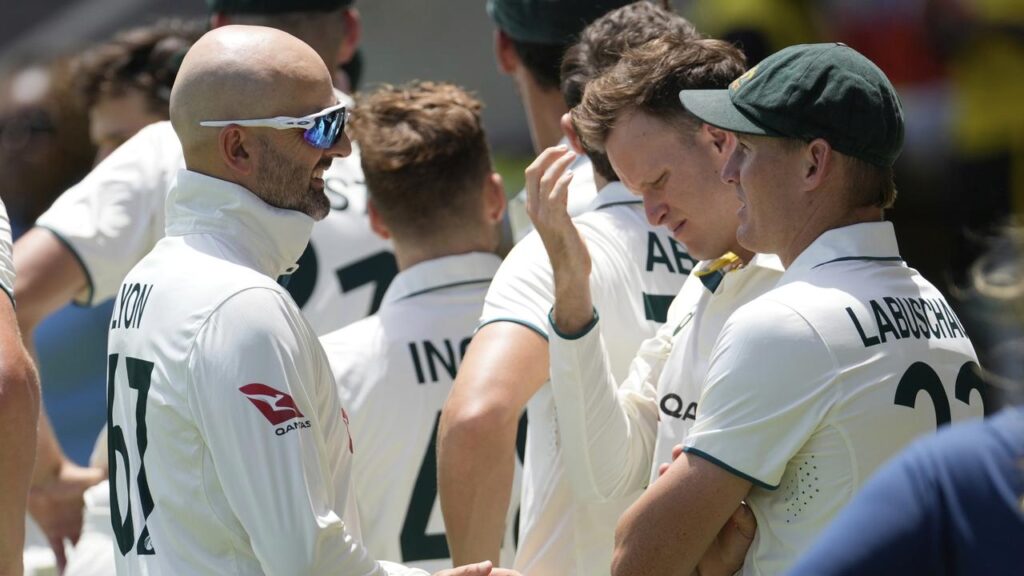
In a surprising strategic move, Australian captain Pat Cummins has opted to bat first after winning the toss in the third Test against the West Indies in Jamaica. The decision comes on the heels of a significant selection shake-up, with veteran spinner Nathan Lyon omitted from the squad in favor of conditions-based choices. This marks a pivotal moment as Australia embarks on its first overseas day-night Test at Kingston’s Sabina Park.
Scott Boland has been recalled to the team for this pink-ball contest, while Lyon finds himself squeezed out of the starting XI. The West Indies have also made noteworthy changes, dropping veteran opener Kraigg Braithwaite for Mikyle Louis and introducing Kevlon Anderson for his Test debut. Vice-captain Jomel Warrican returns to the squad, replacing fast bowler Anderson Phillip.
Mitchell Starc’s Milestone Moment
This Test is not only significant for team selections but also marks a milestone for Mitchell Starc, who is set to play his 100th Test match. Starc becomes just the second Australian fast bowler to reach this landmark, following in the footsteps of Glenn McGrath. The match is scheduled to commence at 4.30 am AEST, with Starc leading the Australian bowling attack.
Starc’s achievement has drawn praise from cricketing legends, including Pakistan’s Wasim Akram. Akram, a left-arm fast bowler himself, hailed Starc as a “modern-day great” and emphasized the significance of reaching 100 Tests.
“It is a big deal in this day and age to reach 100 Tests, congratulations to Starc,” Akram told AFP. “That shows the quality and resolve of the man.”
The Strategic Shift: All-Pace Attack
The decision to potentially field an all-pace attack by excluding Lyon is a bold move by the Australian team management. Cummins, speaking at Sabina Park, indicated that the team is still assessing the conditions and the behavior of the pink ball.
“With the pink ball there’s a few more unknowns, so we just want to have another look at the wicket, give it a bit of time and work out a team later,” Cummins stated. “We’re still trying to get our heads around exactly what (the pink ball) will do.”
Scott Boland appears to be the frontrunner to replace Lyon, with fellow seamer Sean Abbott also in contention. This strategic shift underscores Australia’s adaptability and willingness to experiment with team composition in varying conditions.
Historical Context and Future Implications
This Test not only represents a tactical shift but also highlights the evolving nature of cricket strategy in response to changing conditions. The use of the pink Dukes ball in an overseas setting adds a layer of complexity and intrigue to the match. Historically, day-night Tests have been a relatively recent innovation, aimed at increasing viewership and adding a new dimension to the traditional format.
For the West Indies, the changes in their lineup reflect a focus on nurturing new talent and adapting to the demands of modern cricket. The inclusion of debutant Kevlon Anderson and the return of Jomel Warrican indicate a strategic attempt to balance experience with fresh energy.
As the Test unfolds, all eyes will be on how these strategic decisions play out on the field. The implications of this match extend beyond the immediate series, potentially influencing future team selections and strategies in international cricket.
With the first ball set to be bowled shortly, cricket enthusiasts worldwide are eagerly anticipating the outcome of this historic encounter. The decisions made today could set the tone for future day-night Tests and redefine strategic approaches in international cricket.







